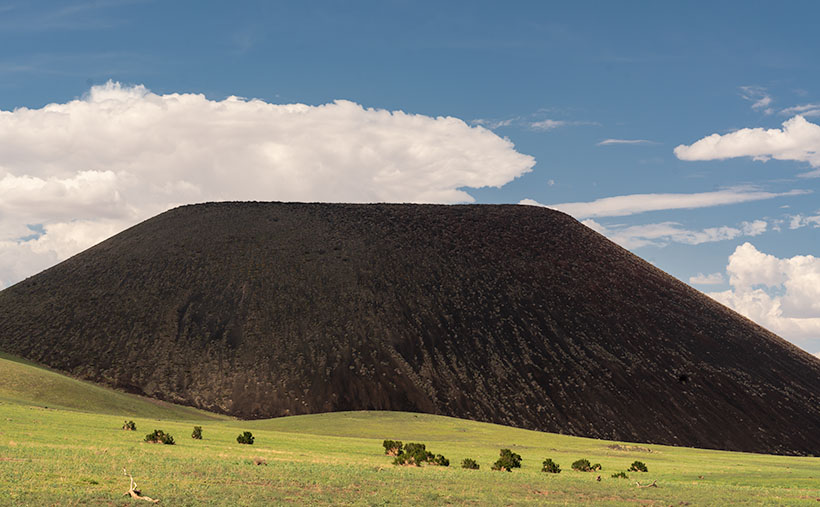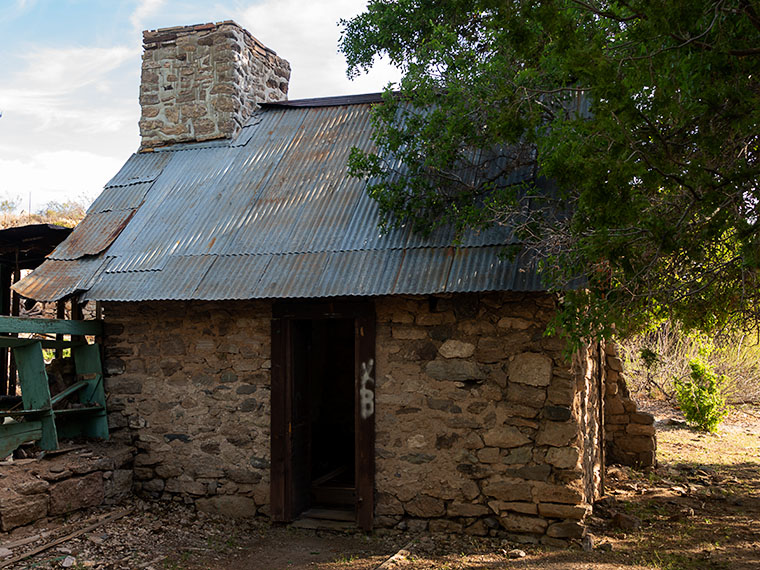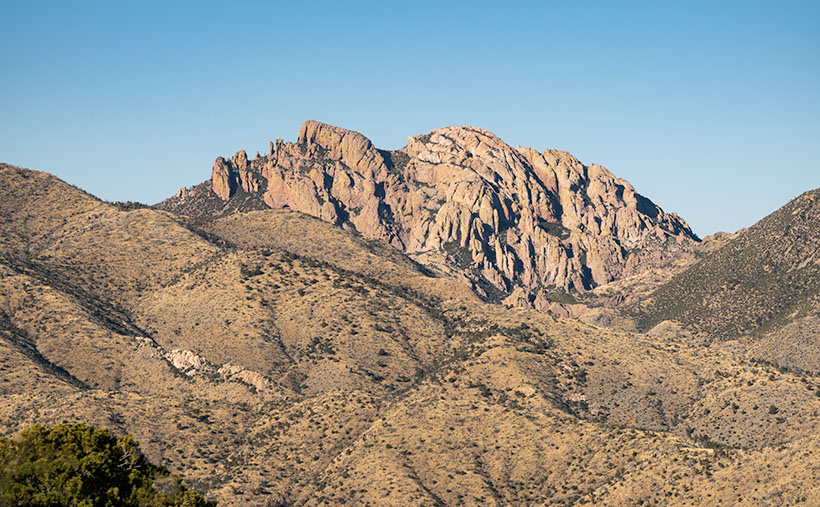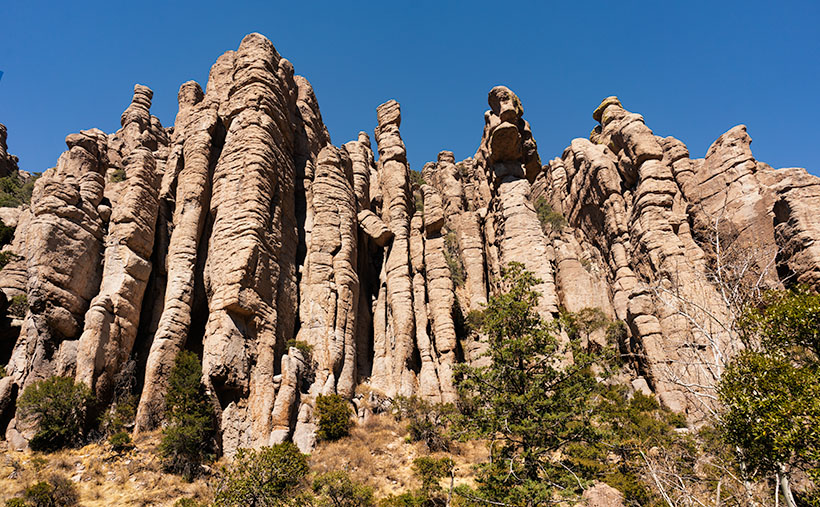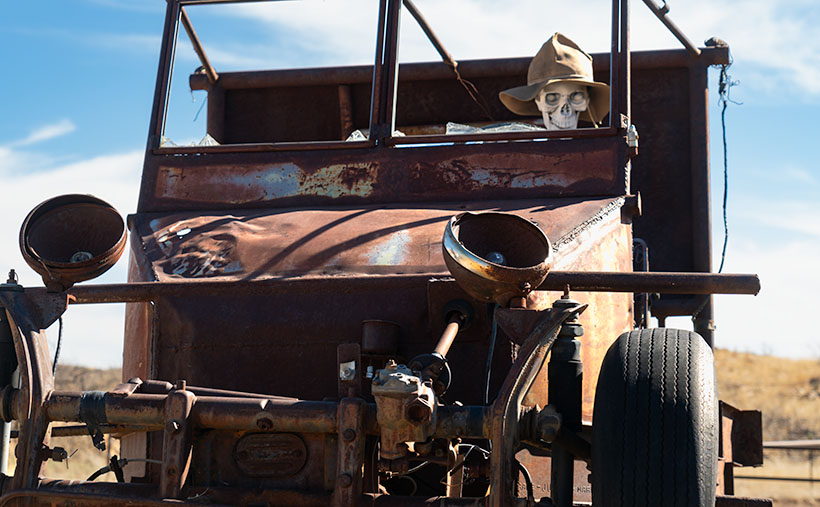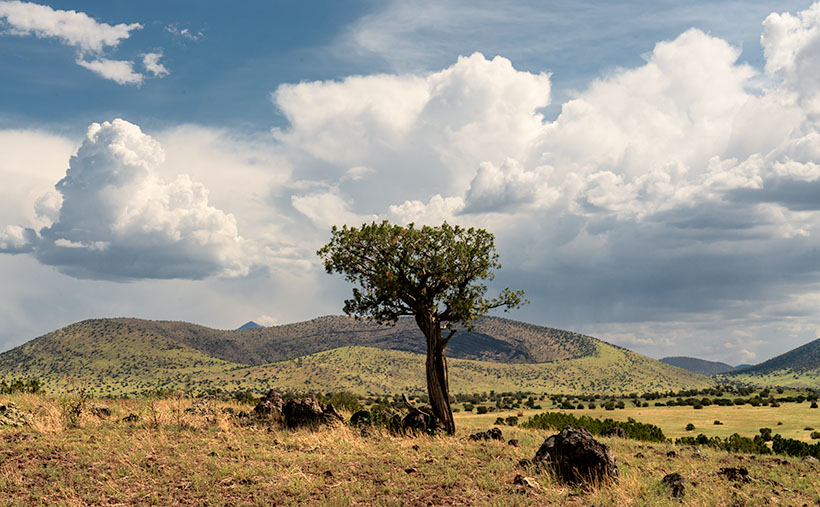
I’m unsure where my head was last week when I wrote that today was the last Sunday in October. It wasn’t until the middle of the week that I realized I was wrong, and another weekend was ahead. Don’t worry; I have one more photo from the San Francisco Lava Field that I’d like to show you. You’re so lucky.
Queen Anne and I didn’t have to travel far from S.P. Crater to find this week’s scene. She didn’t move at all. She sat in the Jeep and continued to read her Kendal while I walked due south across the dirt road to a tree that I found interesting. I composed my shot as I walked toward the juniper. I wanted to include the monsoon clouds building over the San Francisco Peaks and some of the lava bombs surrounding the tree; otherwise, I would have moved closer to capture its twisted trunk. When I finally processed the photo this week, I realized that I had grabbed another volcanic crater—it’s a twofer. I’d rather be lucky than good—it takes up less time.
The cone in this week’s shot is Colton Crater. It looks like a fallen birthday cake. No amount of icing will cover that mess up. Compared to the mountain I featured last week, this one doesn’t seem impressive. It doesn’t look tall and well-formed like S.P. Crater. That’s only an optical conclusion. Colton has more height and width, and the caldera is deeper. And there is another smaller cone inside Colton’s caldera. You’ll have to look on Google Earth or hike its rough grade to see it. Incidentally, along the horizon, the small pyramid-shaped peak is Mt. Humphreys—Arizona’s highest mountain peak.
The reason that Colton looks old and saggy is the same as why I do; it’s an old fart. While S.P. Crater’s last eruption was only 55,000 years ago (a baby), Colton Crater hasn’t seen any action in 200k – 800k years. That’s plenty of time for gravity and erosion to bring a mountain to its knees. For example, the interior of Colton’s crater has been swept clean of residual ash and pumice from its eruption.
Scientists don’t name things very creatively. They tend to give out codes instead of names. For most of the time that geologist has been studying the San Francisco Peaks, this crater was called V160. It was the 160th volcanic flow in the lava field. See what I mean—where’s the romance in that? Dr. Harold Sellers Colton was the founder and director of the Museum of Northern Arizona in Flagstaff, and after he died in 1970, the local academia renamed Volcano 160 in his honor. That was nice.
You can see a larger version of Colton Crater Juniper on its Webpage by clicking here. Come back next week when we finish our tour of the San Francisco Lava Field with one last photo. This time I’m sure—I looked it up on my calendar. We’ll see you then.
Till next time
Jw
BTW:
I have an old friend from my California racing days named Gary Wheeler. You might have read some of his comments in this journal. Since his retirement, he has been taking some fantastic bird photographs. I don’t know; maybe old racers turn to photography when they’re too old to do anything useful. After much urging, Gary has put his collection online for people to enjoy. If you enjoy birds, you should pay a visit at: https://gowheeler.smugmug.com/. Don’t worry; he didn’t pay me for this advertising.

